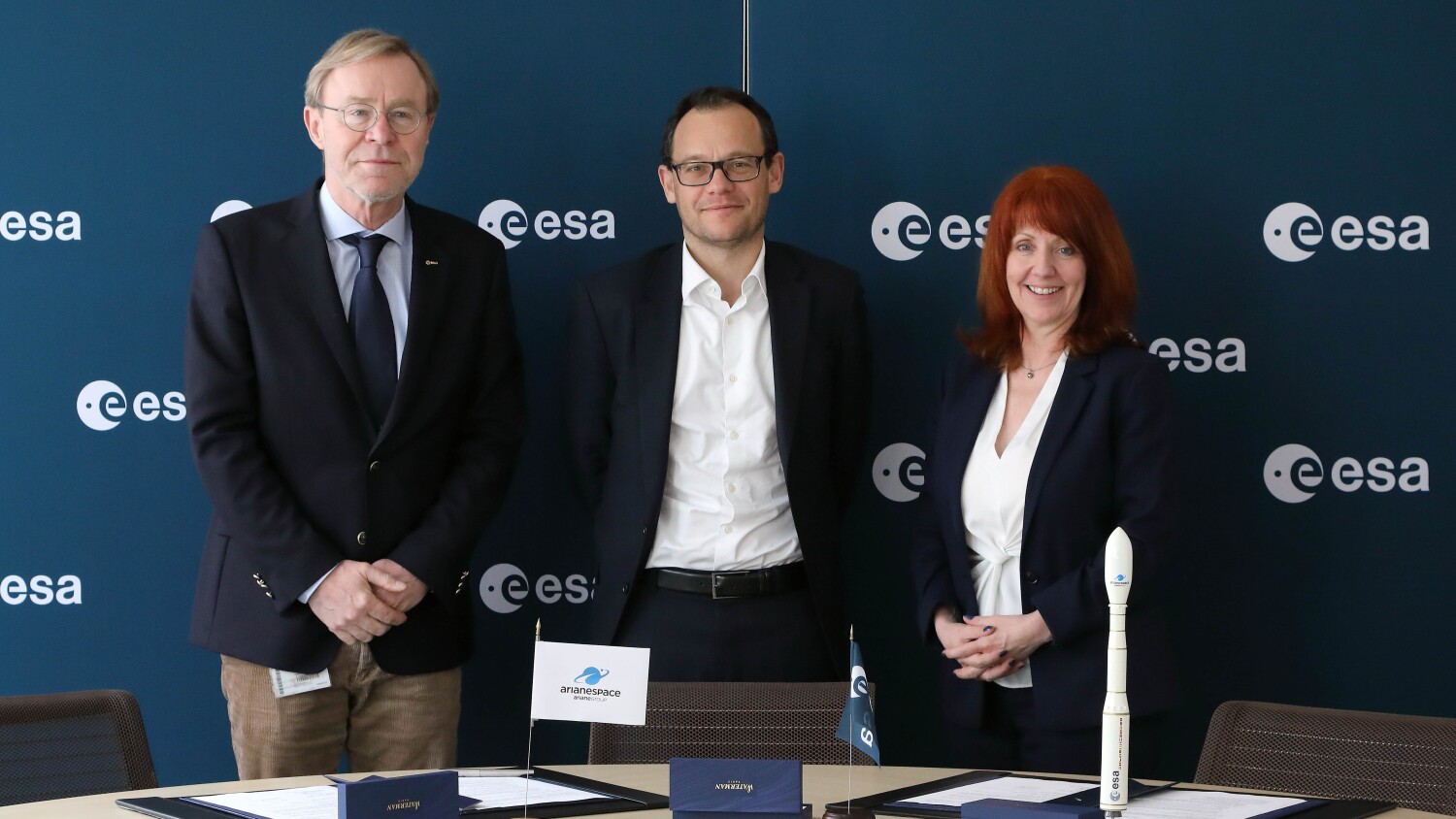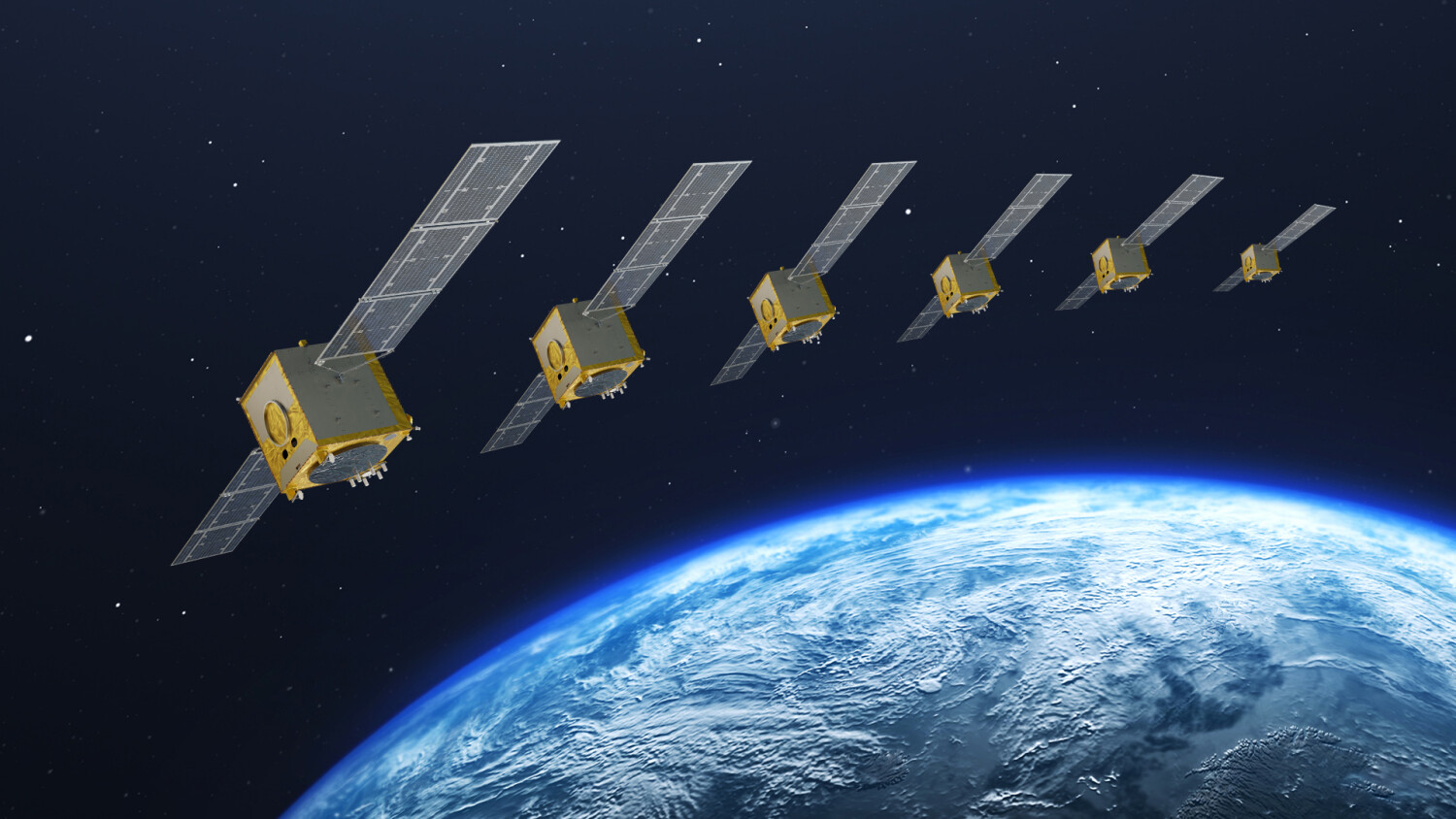Arianespace today orbited two geostationary communications satellites: INSAT-3E for the Indian Space Research Organisation (ISRO), and e-BIRDTM for European operator Eutelsat.
The mission’s third payload, ESA’s SMART-1 lunar probe, was successfully injected into an orbit that will take it to the Moon.
Thirteenth successful launch
With its 13th successful mission, the standard Ariane 5G (“Generic”) launcher confirmed its technical and operational maturity.
This is the third successful Ariane 5 mission in 2003. It confirms the decisions made by the ministerial-level European Space Agency (ESA) Council, which approved the Ariane 5 support plan and also gave the go-ahead for the construction of a Soyuz launch pad at the Guiana Space Center. This will provide Arianespace with a complete family of launchers, enabling the company to remain a leader in the commercial launch services marketplace.
These decisions resulted in the recent agreement signed by Arianespace and EADS Space Transportation at the Paris Air Show for production of a batch of 30 Ariane 5 launchers to ensure the continuity of Arianespace’s launch service. The higher productivity that results from this order will improve the Ariane launcher’s competitiveness for the benefit of all customers.
Loyal customers on Flight 162: ISRO, Eutelsat and ESA
For today’s mission, Ariane’s selection by a leading international operator, as well as the Indian and European space agencies, clearly reflects widespread recognition of Arianespace’s top-flight launch service.
INSAT-3E is the 11th Indian satellite to be orbited by Europe’s launcher. Arianespace and ISRO have worked together for over 22 years, starting with the 1981 launch of India’s first satellite, Apple.
e-BIRDTM is the 20th satellite that Arianespace has launched for Eutelsat. The first satellite ever deployed by Eutelsat was ECS 1 – a payload launched by Ariane in 1983.
SMART-1 is the 25th ESA satellite to use the Ariane launcher. It will be followed next year by the Rosetta spacecraft, along with the first of nine ATV cargo vessels that will support the International Space Station.
Flight 162 at a glance
Flight 162 was carried out by a standard Ariane 5 “Generic” launcher from Europe’s Spaceport in Kourou, French Guiana. Liftoff was on Saturday, September 27, 2003 at 8:14 p.m. local time in Kourou (23:14 GMT, 7:14 p.m. in Washington, D.C., and on September 28 at 1:14 a.m. in Paris, and 4:44 a.m. in Bangalore, India).
Provisional parameters at injection of the storable propellant upper stage were:
Perigee: 649.5 km for a target of 648.7 km. (±3 km.)
Apogee: 35,935 km for a target of 35,873 km. (±160 km.)
Inclination: 7.01 degrees for a target of 7.01 degrees (±0.06º)
INSAT-3E was designed, assembled and integrated by the Indian Space Research Organization (ISRO) in Bangalore, southern India. Weighing 2,750 kg. at liftoff, and equipped with 36 C-band and extended C-band transponders, it will be positioned at 55 degrees East. It will provide telecommunications and TV transmission services for the Indian sub-continent.
e-BIRDTM was built by Boeing Space Systems in El Segundo, California, using the BSS 376 platform. It is the 23rd spin-stabilized satellite to be launched by Arianespace. e-Bird weighed 1,525 kg. at liftoff, and is fitted with 20 Ku-band transponders. It will provide high-speed IP links for Europe and Turkey. This satellite marks the latest step forward in Eutelsat’s strategy to establish itself as a benchmark provider of high-speed transmission services for businesses, communities and consumers.
SMART-1 is Europe’s first Moon mission. Its primary aim is to test the onboard electric propulsion system for future deep space missions. The Smart 1 probe was built by the Swedish Space Corporation, with ESA as prime contractor. It weighed about 370 kg. at liftoff. Placed into an elliptical orbit around the Moon, SMART-1 will qualify various new technologies, while also establishing an exhaustive inventory of chemical elements on the lunar surface.







